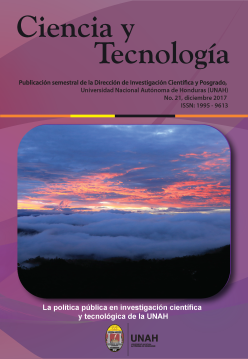Archaeastronomy at the Archaeological Site of Yarumela
DOI:
https://doi.org/10.5377/rct.v0i20.5956Keywords:
Archaeoastronomy, culture, alignments, equinoxes and solsticesAbstract
The Archaeological Site of Yarumela is considered one of the oldest pre-Hispanic sites of the Mesoamerican corridor in Honduras, has an existence of approximately 3200 years, today it is located between the departments of Comayagua and La Paz. It is believed that the inhabitants who occupied the site at its most amazing moment had an advanced knowledge regarding observation of celestial bodies. In this investigation, the apparent movements of the sun over the western horizon were specifically considered to determine the alignment between the structures on the days of the equinoxes and solstices. According to the researches carried out by archaeologists, this site was occupied during the formative period (1000 BC to 250 AD) where an indigenous society developed that formed the basis of the Lenca culture found by the conquerors in 1537 (Dixon, Boyd, 1991) cited in (Ramos, 2014, in press). The methodology used was to measure the azimuth of the sunset by the horizon and the azimuth of the structures as well as the height of the mountain specifically where the sun is hidden and thus determine the orientation and alignment of the structures with respect to the sun.
Downloads
2159
Downloads
Published
How to Cite
Issue
Section
License
© Revista Ciencia y Tecnología
Authors who publish in this journal accept the following conditions: In accordance with the legislation of copyright, Revista Ciencia y Tecnología, recognizes and respects the moral right of authors, as well as the ownership of the patrimonial right, which will be ceded to the magazine for its diffusion in open access in printed version and in digital format. By being part of multiple indexers, databases and reference systems, the articles published by Revista Ciencia y Tecnología will be visible and will be downloaded from these websites, indicating, in all cases, the authorship of the articles, the date of publication and the number of the journal to which they correspond.




